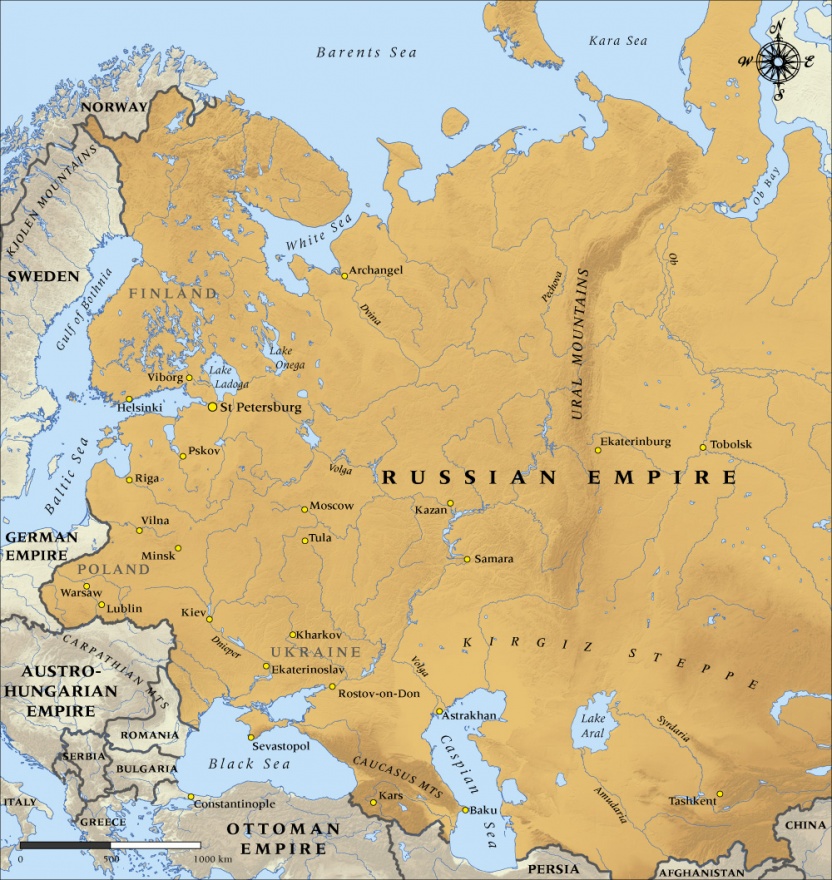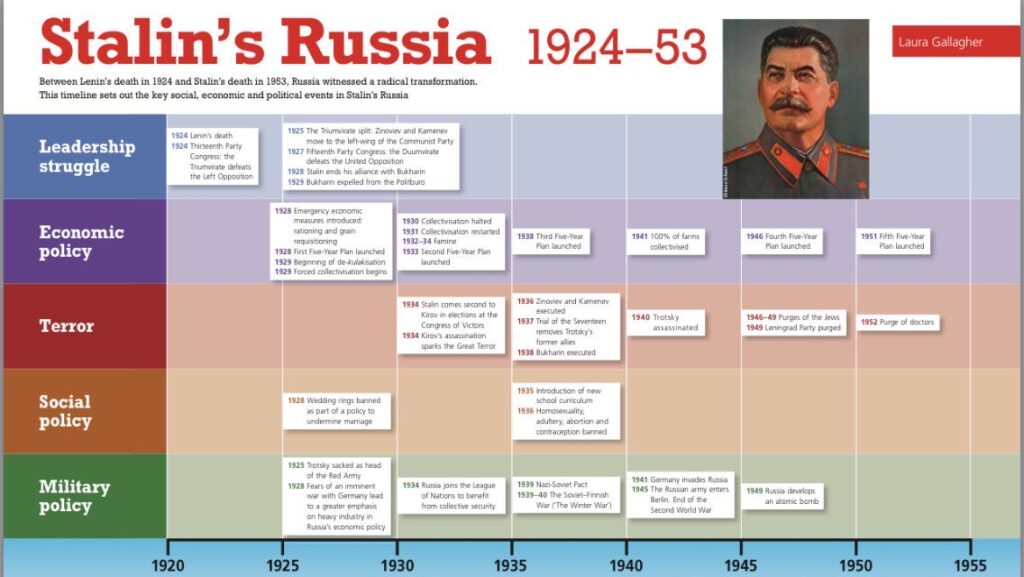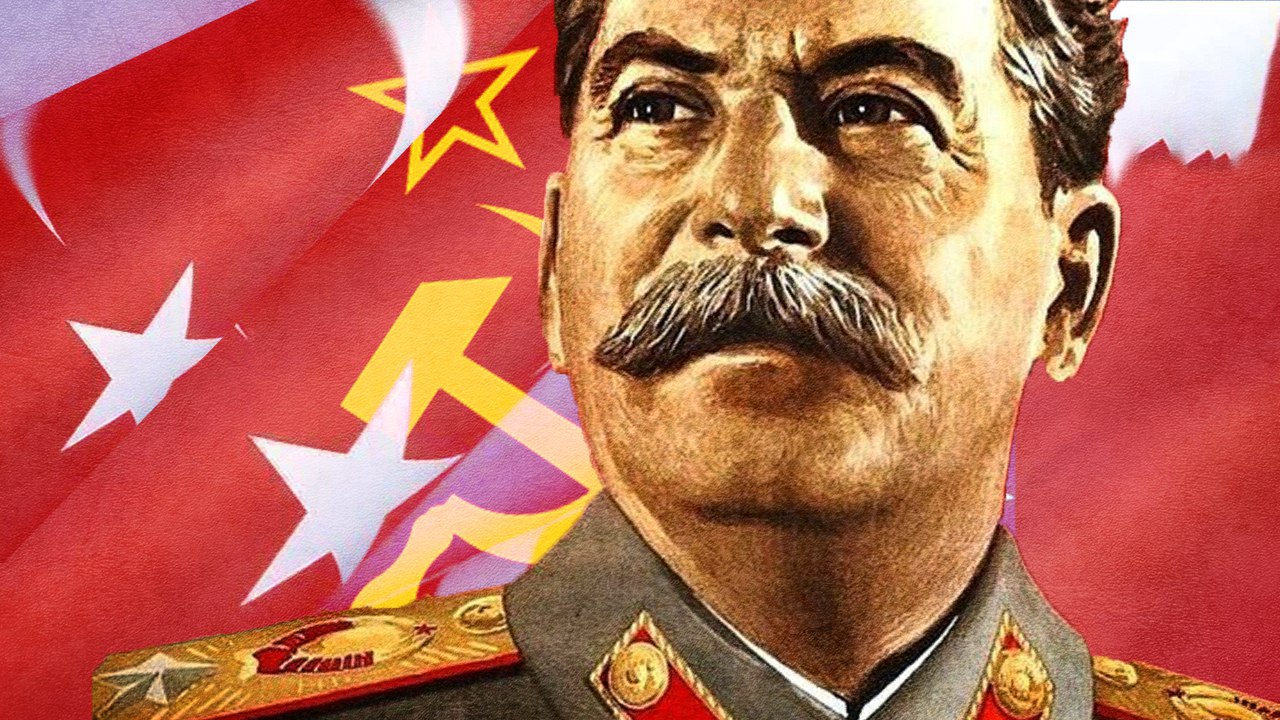Timeline of Soviet Foreign Policy


Russian Revolution
- Why did Russia perform poorly during the First World War?
- What caused the revolution?
- What was the Provisional Government?
- How did Lenin, Trotsky and the Bolsheviks come to power?
- How did Russia leave the First World War?
- What does ‘socialism in one country’ mean?
- How did the Bolsheviks maintain power in Russia?
- How would you describe the state of the USSR in 1922?
- In the 1920s, what should be their foreign policies towards,
- France
- Poland
- Germany
- Japan
- Britain
- Italy
Stalin

Soviet Psyche

Crimean War

Soviet Foreign Policy
- ‘Socialism in one country‘ is a key phrase to remember for the interwar period. Stalin wanted Marxism-Leninism (the Soviet version of Communism) to be successful in his country before exporting the ideology to the world. So Soviet foreign policy was largely to survive for the 1920s and 1930s, whilst at the same time to publicise how successful their social, economic and political policies were. This would prepare the groundwork for future expansion.
- Capitalist or imperialist countries were seen to be hostile as they inevitably saw Marxism-Leninism as a threat to their existence.
- Foreign ministers were appointed to discuss international diplomacy but ultimately Stalin had the power over this ministry.
- In 1919, Comintern was set up to aid the spread of the revolution.
- 1917-18, foreign nations were embarrassed when the Bolsheviks published the secret treaties Tsar Nicholas had made with the western powers. They also stalled in signing the peace treaty with Germany (Brest-Litovsk) hoping that the war would end soon so they would get a better deal. By January 1918, the German patience ran out and threatened to invade unless the treaty was signed.
- Failed communist governments in Hungary and Bavaria added to the belief that socialism in one country should be the aim rather than exporting the proletariat revolution. Jiang Jieshi’s victory over the Chinese Communist Party in 1927 may have also added to this.
- However, Comintern’s propaganda focused on communicating only positive messages about their social, economic and political experiment. This maintained the Left in parts of the world and gained the recognition of intellectuals too.
- Rivalry with the capitalist countries only worsened when the USSR not allowed to join the inaugural League of Nations.
- This may have added to the policy to build bridges with their previous rival in the Great War, and one who was also isolated, Germany. The signing of the Treaty of Rapallo, where both the USSR and Germany agreed to improve economic and military links, was a result of this. The 1926 Treaty of Berlin reaffirmed Rapallo too.
- Weimar Germany had a weak military because of the restrictions included in the Treaty of Versailles. But secretly the USSR conducted military exercises with their German counterparts.
- However, the USSR was unhappy when Germany signed deals with the west (Locarno Pact, Dawes and Young Plans).
- The Far East became an increasingly worrying place for the USSR. Memories of the 1904-5 military defeat and Japan‘s growing military prowess focused Soviet minds on Asia. The 1931 invasion of Manchuria and the setting up the new province of Manchukuo demonstrated Japan’s territorial ambitions, possible aiming at the USSR’s naval port at Vladivostok and settlements in Siberia next. Stalin began to support Jiang Jieshi‘s Guomindang (GMD or Nationalist Party), even though he had been fighting the Chinese Communist Party.
- In 1932, the USSR made non-aggression pacts with Poland and France (it also signed similar agreements with Latvia, Finland, Estonia and Turkey (1931)). This would appeal to the Left across the world as well preventing any conflict whilst Stalin’s Five-Year Plans were in place.
- As Hitler became more powerful, it was clear to Stalin and the USSR that their support for communist parties in Germany was failing. His speeches were anti-Bolshevik or communist so the concern for war was growing by the mid-1930s. Hitler had already torn up the Treaty of Rapallo and withdrawn any German/Soviet military collaboration.
- Hitler’s non-aggression pact with Poland in 1934 perhaps forced Stalin’s hand in joining the League of Nations in the same year. The USSR was not ready for war so this move could buy time. The League’s policy of ‘Collective Security’ may help deter future German aggression too.
- Another strategy was to maintain good relations with Germany. Economic meetings were held between the two governments which may have suited both sides in avoiding war.
- As the Right grew in Europe, Comintern changed its strategy and supported both socialists and communists. For example, it threw its support behind the French Popular Front in 1936.
- AJP Taylor argued that Britain and France should share some of the blame for the Second World War. Against the aggression of Germany (Rhineland, Czechoslovakia, Austria), Italy (Abyssinia) and Japan (Manchuria), they did very little. The USSR could not rely on western support against these militaristic regimes and so had to deal with the devil instead – the Nazi-Soviet Pact of 1939. Notably, the USSR had signed a mutual assistance pact with Czechoslovakia (in 1935 and with France included too) but was hardly consulted as Sudetenland was handed over to Germany.
- Stalin had seen the Wehrmacht’s actions in the Spanish Civil War so knew the potential power Germany had. The USSR had supported the Republicans for three years but were unsuccessful in preventing the Italy/Germany backed Nationalists from winning (his purges of his senior officers could be a reason why). Soviet policy in Spain was perhaps a response to their fear of fascism dominating Europe but it also demonstrated their change in strategy from ‘Socialism in one country’.
- In 1939, the USSR staved off the threat from the East by defeating Japan at the Battle of Khalkin-Gol. The commander of the Red Army at this battle was General Zhukov. He had escaped the purges and rose to become one of the country’s best-ever military commanders (Moscow 1941, Stalingrad 1942, Berlin 1945).
- The Nazi-Soviet Pact (also called Ribbentrop-Molotov after the names of the two foreign ministers) was Soviet policy but it was a German idea, aimed at preventing a two-front war and Britain and France recreating the Triple Entente.
- Stalin gained from the pact in several ways. He was to take the bulk of Poland (now a buffer against future German aggression), the Baltic countries of Latvia, Estonia and Lithuania, Bessarabia (now Moldova and part of Ukraine), and to buy time for the Red Army to prepare for war (the plan was for 1942).
- Historians can exonerate Stalin for signing this pact as he was backed into a corner. But this does not defend Soviet actions in the lands his soldiers took over. (Katyn Forest)
- Soviet ambitions did not stop at the lands above, in November 1939 it invaded Finland. Despite initial embarrassing military setbacks (the Finns drove back the invaders despite hugely inferior numbers), the Red Army prevailed. This brought them international condemnation although Britain and France refrained from declaring war on them as they saw Germany as the bigger threat to their own security.
- On June 22 1941, Operation Barbarossa went into action. Three million soldiers, largely from Germany, attacked the Soviet Union. It was a surprise attack, Stalin previously dismissing any reports of a German military build-up so as not to antagonise his ‘ally’. The Red Army suffered catastrophic losses in 1941 and defeat was a possibility. However, a combination of the Soviet population, resources and authoritarian rule helped them recover and be largely responsible for the Nazi defeat in 1945.
Foreign Policies towards Other Nations
Germany
Treaty of Brest-Litovsk 1918
- Peace treaty to leave the World War, ending hostilities between Russia and Germany
- Recognized the independence of Ukraine, Georgia, and Finland; gave up Poland and the Baltic states of Lithuania, Latvia, and Estonia to Germany and Austria-Hungary; and ceded Kars, Ardahan, and Batum to Turkey
Treaty of Rapallo 1922
- Establish diplomatic and economic relations
- Secretly established military cooperation as Germany rebuilt its army and air force secretly at camps in the Soviet Union. The two armies also conducted training together so expertise could be shared.
Treaty of Berlin 1926
- Reaffirmed Rapallo signed in 1922
- Pledged neutrality in the event of an attack on the other by a third party for the next five years
- Renewed additional protocol 1931, ratified 1933
Trade agreements mid-1920s
- Trade had increased to 433 million Reichsmarks per year by 1927
- Germany helped the Soviet industry modernize to assist in the establishment of tank production facilities at the Leningrad Bolshevik Factory and the Kharkiv Locomotive Factory
German-Soviet Trade and Credit Agreement 1939
- An economic arrangement between Nazi Germany and the Soviet Union where the latter received an acceptance credit of 200 million Reichsmark over 7 years with an effective interest rate of 4.5 percent
Nazi-Soviet Non-Aggression Pact 23 August 1939
- Guarantee of peace by each party towards the other and a declared commitment that neither government would ally itself to or aid an enemy of the other
- Opportunity to allow Russia to rearm and recruit men after Stalin’s purge of the armed forces
- Maintain economic ties
- Secret sections of this pact, in essence, gave the USSR eastern Poland (divided up Poland between them), the three Baltic states and Bessarabia, put off the likelihood of a war with Germany for some
- Defined the borders of Soviet and German spheres of influence across Poland, Lithuania, Latvia, Estonia, and Finland
- Provided for large sales of Russian grain and oil to Germany and Germany shared its military technology with the Soviet Union
German-Soviet Commerical Agreement 1940
- For one year, to deliver commodities (oil, raw materials, and grain) to the value of 420 to 430 million Reichsmarks
The German invasion of the Soviet Union in June 1941, in violation of the 1939 non-aggression pact, ended all economic agreements.
France
Poland
Japan
Italy
Perspectives
Alastair Kocho-Williams – As the Bolsheviks emerged victorious from the Russian Civil War they still appeared to have an unclear agenda in foreign policy, but would find greater clarity of their objectives as the decade wore on. Soviet foreign policy was the product of a mix of Marxist ideology and pragmatism in the face of what could realistically be brought about. Russia’s International Relations in the Twentieth Century
Erik P Hoffman had few resources and leverage to conduct a successful foreign policy with the capitalists. But these weaknesses were turned around to help consolidate power, actions by foreign countries were threats to the Soviet Union and therefore more power should be in the hands of the authoritarian leadership to stop them. Soviet Foreign Policy
Jon Jacobson argues that Soviet foreign policy in the 1920s was designed to support the revolution. Political and economic ties were made to legitimise the revolution and to build an economy to support it. The Treaties of Rapallo and Berlin are examples of this policy. On On the Historiography of Soviet Relations in the 1920s
The Marxist view of Soviet foreign policy in the interwar years was that it was a success. The revolution was in the embryonic stage and preventing capitalist powers from destroying it was a key part of Soviet foreign policy. The country avoided war, helped by the treaties it signed and joining the League of Nations. It was able to industrialise rapidly in the 1930s, and this helped the country defend itself against the capitalists of the Second World War and Cold War.
Judgements
- Soviet foreign policy failed if their aim was to deter invaders or aggression. He signed numerous pacts and deals with nations but these did not prevent war in 1939 or 1941.
- However, if Soviet foreign policy was to buy time to allow the country to embed their social, economic and political experiment, it had some success. It was only attacked in 1941 and was able to survive despite the huge losses.
- Finally, the Soviet experiment needed international recognition. As it signed several pacts and became a member of the League of Nations, it got it.
Did the Soviet Union follow a consistent foreign policy or was it opportunist?
Ruyi: it was opportunist because some events like the rise of Hitler or the Japanese invasion of Manchuria could not be foreseen, even though Japan had been a threat to Russia since the Russo Japanese war. Russia would only know how to implement foreign policy when something had already happened, to take precautions for the future.
Ro Xzi: It was opportunist. This is demonstrated by the foreign policies enacted following events such as not being allowed to join the League of Nation and the invasion of Manchuria. Furthermore, the victory of the French Popular Front in 1936 led to the change in strategy of the Comintern to support both socialists and communists. Foreign policies changed in response to events that took place in order to achieve its key aims and the Soviet psyche
But it was also consistent: change in strategy of ‘socialism in one country’ in the late 1930s (1939) after the five-year plans, much better position to spread ideology.
Other Resources

